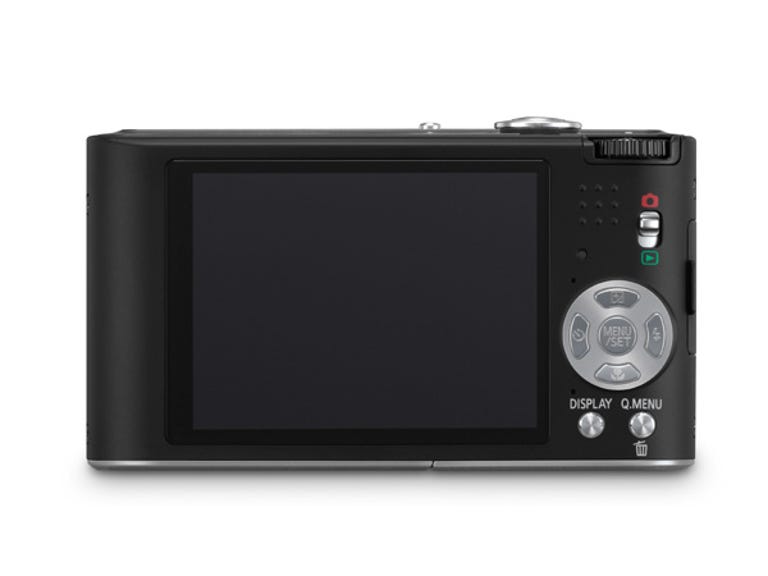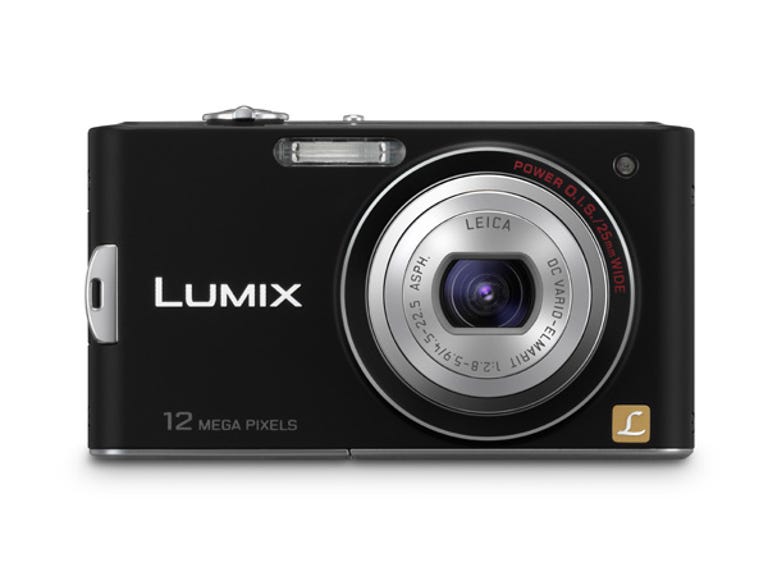 Why You Can Trust CNET
Why You Can Trust CNET Panasonic Lumix DMC-DX65 review: Panasonic Lumix DMC-FX65
It's a good camera that can take some beautiful pictures, but for the price and the lack of extra features, the FX65 doesn't live up to our expectations of value — and its video quality is terrible.
Design
Sharing a look that has travelled across the boundaries of time (and perhaps space), the FX65 hardly differs from the Lumix range of old. It features that same elongated look as its predecessor, the FX38 — though obviously the naming convention has jumped a couple of numbers — with the lens barrel located over to the right hand side, the flash unit nestled just above, and the Lumix brand insignia prominently plastered across the centre left of the camera. At the top is the requisite power-slider, zoom rocker and shutter button. The mode dial gently juts out from the top plate, rotating around only half of the wheel with several options (intelligent auto, program auto, scene mode, movie mode and clipboard mode).
The Good
The Bad
The Bottom Line

Moving down the back, the standard camera configuration is all there, with the playback, shooting switch and directional pad located alongside a 2.7-inch LCD screen. Measuring 5.41cm high by 9.72cm wide by 1.94cm deep, the FX65 is certainly a slimline camera and weighing in at 126g, this featherweight will hardly put a dent in your pocket. Fortunately it's not too small to lose or drop readily, as surrounding the camera is this nice, slightly rubbery coating that acts as a non-slip grip. The thumb rest is nicely raised too and sits just underneath the mode dial. There's also a wrist-strap, so never fear about this camera slipping out of your buttery fingers. At the base you'll find the combined battery and SDHC compatible card slot, as well as a tripod mount.
Features
We cried, they answered — manufacturers are finally putting nice, wide apertures on their lenses. The FX65 is no exception to the 2009 batch, with a maximum aperture of f/2.8. The wide specifications don't end here as the 5x optical zoom lens opens to 25mm, the same as the FX38. It also makes use of Panasonic's new image stabilisation system called Power OIS, which we also saw on the ZR1. Panasonic claims that the autofocus is incredibly speedy, being able to latch onto a subject within 0.3 second — we'll see in our performance section.
As for the shooting specifications, there's the usual intelligent scene selector that automatically adjusts the settings according to what the camera perceives as the correct scene, AF tracking, intelligent ISO to automatically adjust sensitivity and face recognition.
The screen picks up every fingerprint and smudge that you can think of, and the buttons are rather small for those with portly fingers. We have a couple of misgivings with the screen, while we're on the topic — it's only 2.7 inches, it's only relatively low resolution (230,000 dots) and the asking price of the camera is AU$659. It seems a little much, don't you think? Especially considering this camera doesn't even have AVCHD-Lite HD recording (just 720p in motion JPEG). There's also no HDMI out — only component and AV ports.
Performance
For all our misgivings in regards to its incremental updates, the FX65 fortunately delivers in the performance criteria. It powers on and takes its first shot within 1.675 seconds, has an acceptable shutter lag of 0.125 second, and averages one shot every 0.7 second in burst/continuous mode. Unfortunately it begins to choke after 3 pictures and refuses to take any more until the buffer has cleared which may limit the flexibility this camera could have in fast-moving situations. We found that the speedy autofocus claims by Panasonic rung true for the most part, though we never managed to verify the 0.3 second claim: most of the time the camera was ready to shoot after focusing for 0.4 second.
Image quality
The images we took with the FX65 all had that typical clarity, sharpness and excellent dynamic range that previous Lumix cameras have exhibited. The wide angle lens is rather good indeed, only displaying small levels of distortion, and at the wide end (25mm), there is little evidence of pronounced barrel distortion and chromatic aberration. Take a look at the image to the right for a good example of how the FX65 copes well with a variety of tricky situations that sometimes trip up cameras with wide-angle lenses. This shot was taken at 1/200s at f/4, ISO 80.
Noise did begin to creep in at ISO 400, with visible artefacts appearing and beginning to affect image quality. ISO 1600 is relatively unusable except at small magnifications, not a surprise for a compact of this class.
Colours were nice and deep, full of vivacity but not overly-saturated — as you can see in our comparison with a similar camera, the Canon IXUS 200 IS, the Panasonic's image has more tonality and less of a punch to the pink. To our eyes, it was more true to the actual scene, but personal taste will dictate which one you prefer. Interestingly, we found the FX65 liked to use the widest aperture (f/2.8) for almost all shots we took at the wide end.
The Canon IXUS 200 IS (top) and Panasonic Lumix DMC-FX65 (bottom). (Credit: CBSi)
Finally, to conclude our analysis of image quality, we have to pay one last look at the HD video that the FX65 produces. Panasonic what have you done? There is no (yes, absolutely no) zoom during filming. Not even digital. This is ridiculous considering all other Panasonic cameras in recent memory that we have reviewed have optical zoom enabled. As for the quality, there was so much grain across the frame that it took us aback — highlights blew out, autofocus was pretty much nowhere to be seen and incredibly slow, and the microphone was fairly poor. Regardless of the situation, indoors or outdoors, the same issues continued to show up, like flaring from the sky or bright light sources, as well as jagged lines across the top of the frame after a period of rapid movement. Overall, the video quality seriously affected the FX65's score in the image quality department.
Conclusion
Panasonic has priced the FX65 rather oddly: for AU$110 less you can get the 8x optical zoom, similarly wide-angled ZR1 which, while not quite as stylish, certainly won't look out of place on the runway. So essentially, you're paying a premium on the FX65 for the fact that it's a stylish camera in name and description alone. It's a perplexing proposition, and one we're not too sure of how to address. Save yourself some money, get the ZR1, and enjoy the extended optical zoom reach in a compact form factor — plus better video quality.


